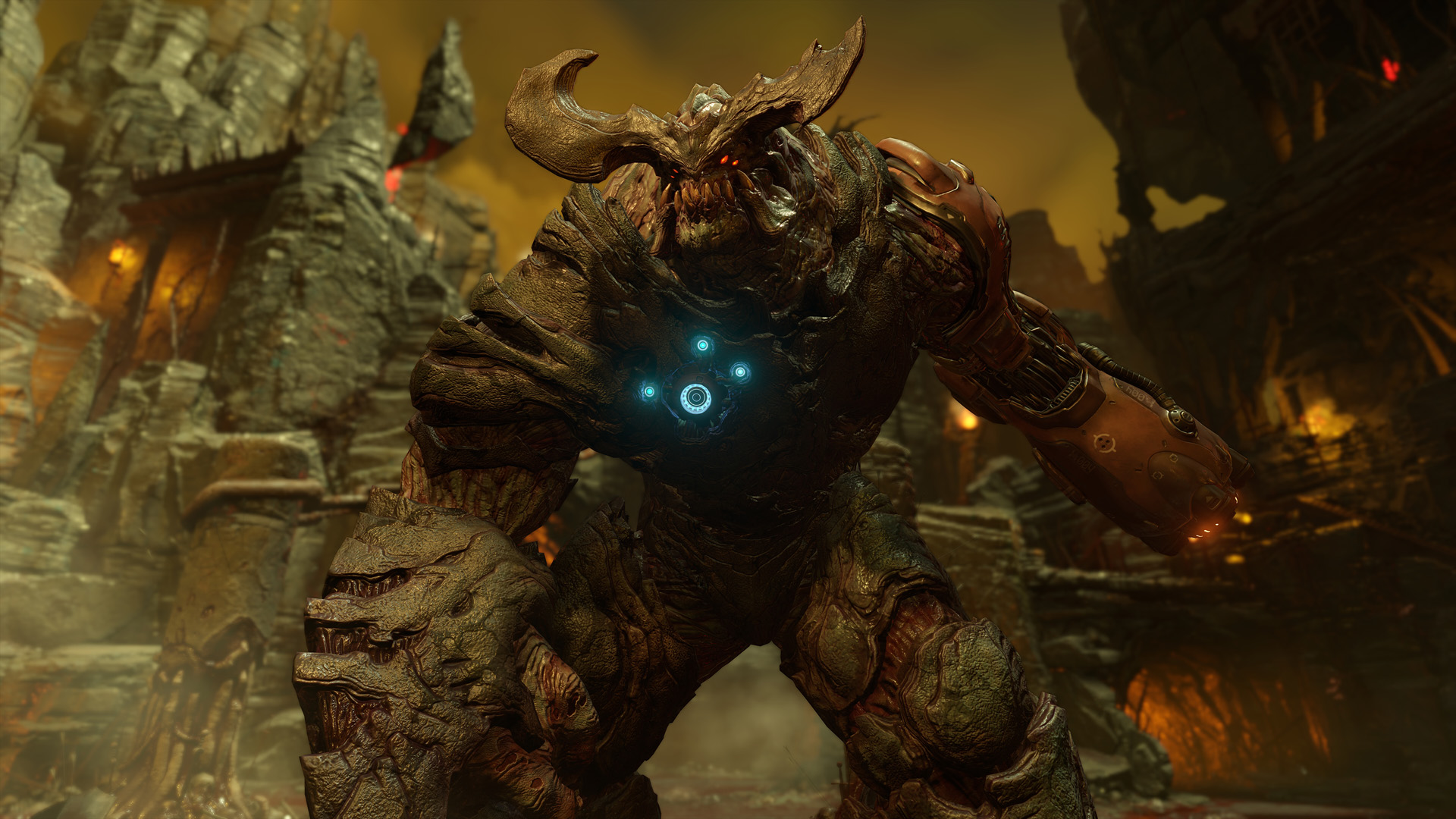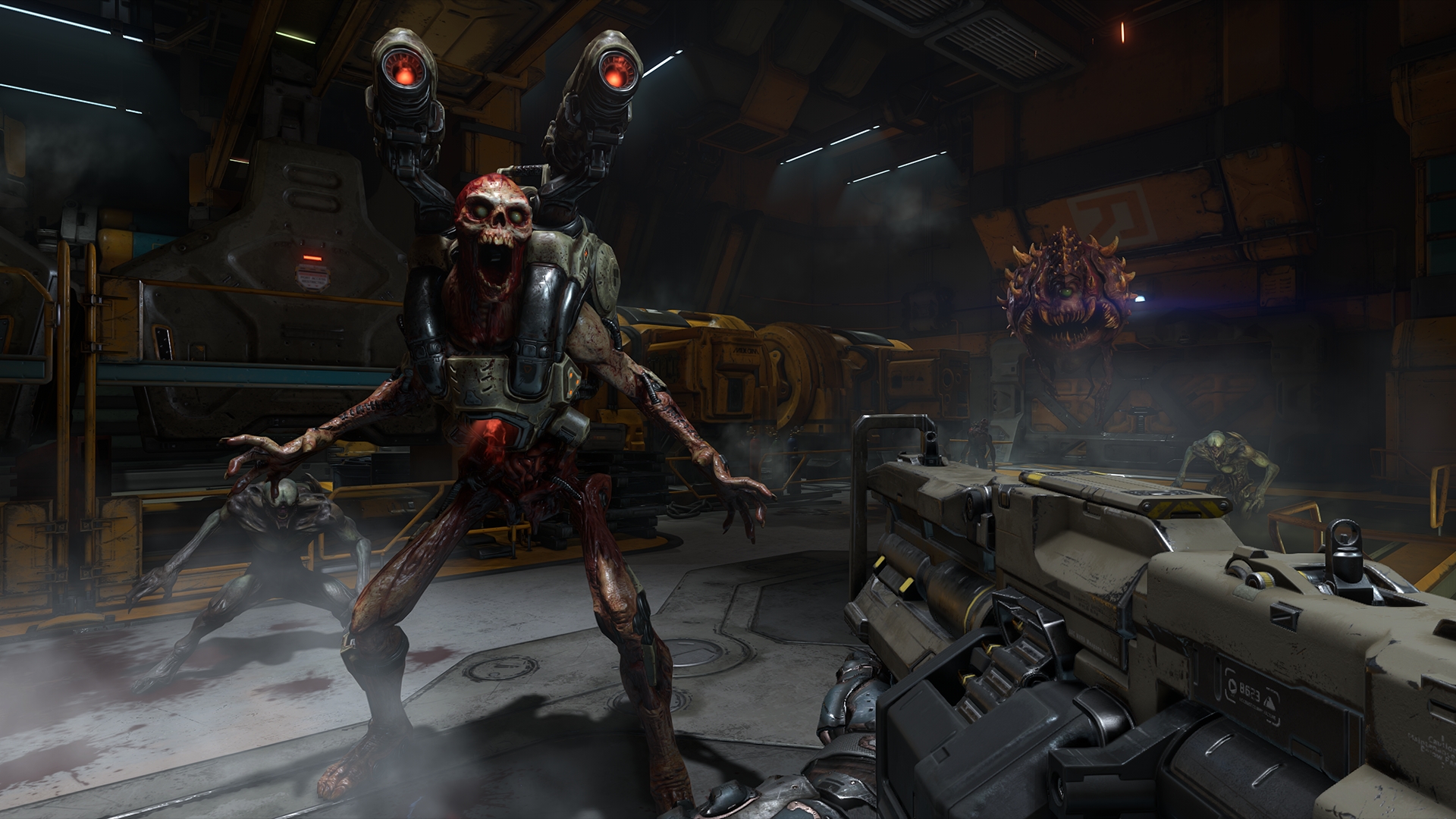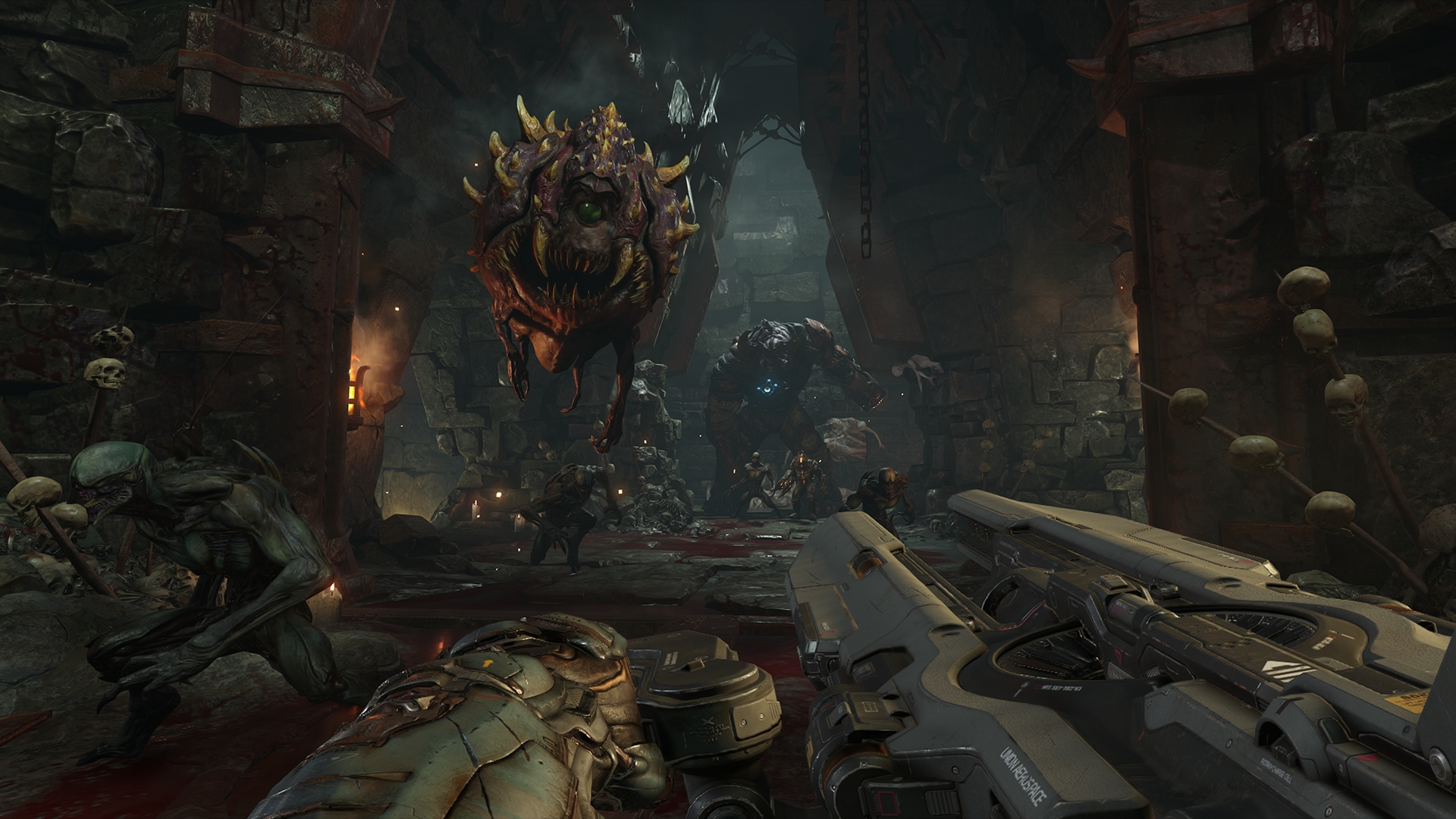New Dooms ferocious intelligence just shows how clever old Doom really was
Doom isn’t what you think it is. There’s a good chance Doom has never been what you think it is. I’m talking about id Software’s new Doom, of course – which I played a great deal of recently and, no, still haven’t recovered from – but I’m also talking about Doom as a wider entity, from 1993 until now.

Sticking with the upcoming game at hand for a little while, let’s rewind to Quakecon. It’s Friday morning. I’m playing Doom’s multiplayer, and having the best time I’ve had with an FPS in years. I’m hurtling around the map like a block of wet soap on a well-buttered ice rink, but navigating with the precision of weaponised scalpel. I’m double-jumping through stormclouds of explosions, and gunfire, and crackling railgun shots arcing through the hot air, and whirling through the sky, unloading both barrels of the Super Shotgun into unsuspecting crania. I’m having a thunderingly good, hilariously anarchic time. But the crucial point, I realise rather rapidly, is that amid all the pulse-rattling exhilaration and giddy, giddy skull-splatting, I’m having a very intelligent good time as well.
Because Doom, for all of the carnage happening on its surface level, is one of the cleverest, most subtle, most well-considered shooter designs I’ve played in a very, very long time. Doom’s refinement starts to become clear once I have just a couple of games’ experience with the new weapon-set. It becomes swiftly apparent that the mindless spam of ordinance is far from Doom’s intent.
Because Doom is not just a random collection of weapons, throwing around lights and noise in a fast-moving environment for the sake of pure spectacle. Each element, from movement, to gun functionality, to the ebb and flow of effective attack and defence, is part of a much bigger, very deliberately cohesive picture. There’s a science and a psychology to it all, Doom’s design feeling as behaviourally minded as it is mechanically honed.

Rockets, for instance, are plentiful, and will rain down fiery devastation almost as fast as you can pull the trigger. But the indirect splash-damage wreaked by the edges of their explosions is vastly smaller than you might expect. If you want to be truly effective with them, you’ll need to be both accurate and clever, predicting your opponents’ movements, judging distance and speed to target, second-by-second, and ideally using other guns to nudge your opponent into position as you lead your shots.
The plasma rifle is a hosepipe of burning hot splatter, but, like many of Doom’s rapid-fire options, doesn’t do a huge amount of base damage. Yes, it’s easier to keep sustained fire on your opponent, but not so easy to complete the kill. The vortex rifle is your option for long-range accuracy, and at full power presents a fine railgun analogue. But to fire at full power, you’ll need to charge it up before the shot, and you’ll have to scope at the same time, vastly reducing your field of view and movement options. Which, in a game as fast and ever-changing as Doom, is a serious detriment.
Similarly, the static rifle will let out an immensely damaging, pleasingly fast-moving burst of pain, but to maximise its effectiveness you’ll need to power up its kinetic charger by running around constantly. And its power instantly starts to drop if you stand still. Yes, its damage output is directly tied to your movement. If any gun’s design encapsulates Doom’s layered approach to combat design, it’s this one.
Weekly digests, tales from the communities you love, and more

The most basic rule one must grasp in Doom is that “Movement is king, stopping is death”. This is a game where taking the initiative is always the best thing to do, even if you don’t yet know exactly what you are going to do with it. It’s a game in which doing something – doing anything – is always better than doing nothing, and in which there is no crouch button, because defence and evasion are about swift, improvisational movement rather than cowering behind cover. When you do go vertical – which you will a lot - it’s to leap over and around enemies, and rapidly mantle up to higher levels. It’s never to hide beneath the lip of a crate. As id gleefully points out, “Crouching just makes you a slower target”.
Because the thing is, Doom doesn’t want your targets – in multiplayer or campaign – to remain simple targets, spots in the distance to be picked off systematically, from relative safety. Doom wants combat to be a conversation. It wants you to truly interact with your opponents, via the intimate language of close, cat-and-mouse firefight strategies. Everything in Doom is set up to support that.
That’s why the static rifle forces you to stay on the move, refusing you the luxury of hunkering down behind a doorway. That’s why the railgun makes anonymous sniping a real challenge, and why the rocket launcher is an honourable, medium-range duelling weapon rather than a one-shot, guaranteed kill-switch. It’s the reason multiplayer Doomguys can soak up a heavy amount of punishment before going down, and why back-pedalling is a little slower than charging ahead or strafing. It’s why the most powerful weapon remains the ultra-close-range Super Shotgun, and it’s the reason those deliriously gory execution moves – which are accessible once a nearby enemy reaches a low enough level of health – exist in the first place.

It’s very, very clever stuff, and it really, really works, Doom’s “skatepark”-like maps providing myriad kinetic solutions to any given situation while the nuances of its combat design interconnect to push you into its world, solving challenges from every angle. But you know the really cool thing? None of this is especially new. It’s all an extension of the way things work in the original Doom. The bestiary of deliberately different ‘chess piece’ enemies, all with specific and unique purposes? Yep, that’s a Doom ‘93 thing. The huge line-up of eclectic fire-power, which acts as a big bunch of highly varied keys for unlocking the game’s various combat puzzles? Yep, that’s original Doom as well. The same goes for the way that nuDoom demands you deal with situations as holistic, strategic encounters rather than simple enemy-by-enemy takedowns. All of this stuff is in oldDoom.
It’s just that back then, no-one formalised it as being a specific approach to FPS. There were no other, drastically different FPS to compare it to. The id Software of 1993 did not explain its games in terms of specific industry trends, design documents and buzzwords, and the games press at the time certainly did not have the vocabulary or historical context through which to define Doom’s structure and conceits. Id just made a game called Doom, and that game played like Doom, because that’s what it was. We didn’t make a fuss about it.

But since then, we’ve created a lot of different types of FPS. We’ve added narrative, and cutscenes, and more scripted spectacle, and as we’ve done that, we’ve told ourselves that we’ve been refining the genre. And from a cinematic perspective, we absolutely have been. But then, by definition of these games being deemed ‘refined’, any games that did not follow their methods, any games that came before those methods were formalised, became perceived as ‘unrefined’. In a transition to mistruth made easier by the explosive aesthetic and gratuitous scenarios of what became known as ‘the old-school shooter’, we started to see older FPS as big, dumb action games, all goofy gratification and little cerebral ambition. And thus we even started to parody them, in other media and even in other games, as something that they really never were.
But now the new Doom has brought their true nature back. And it’s communicating it in refined, modern vocabulary that today’s video game industry understands. It’s speaking up for old Doom in a way that old Doom couldn’t, and never had to anyway. And it’s doing that while, once again, simply being a game called Doom that plays like Doom. Because now, it has finally become obvious, that’s as refined and sophisticated an idea as it gets.



